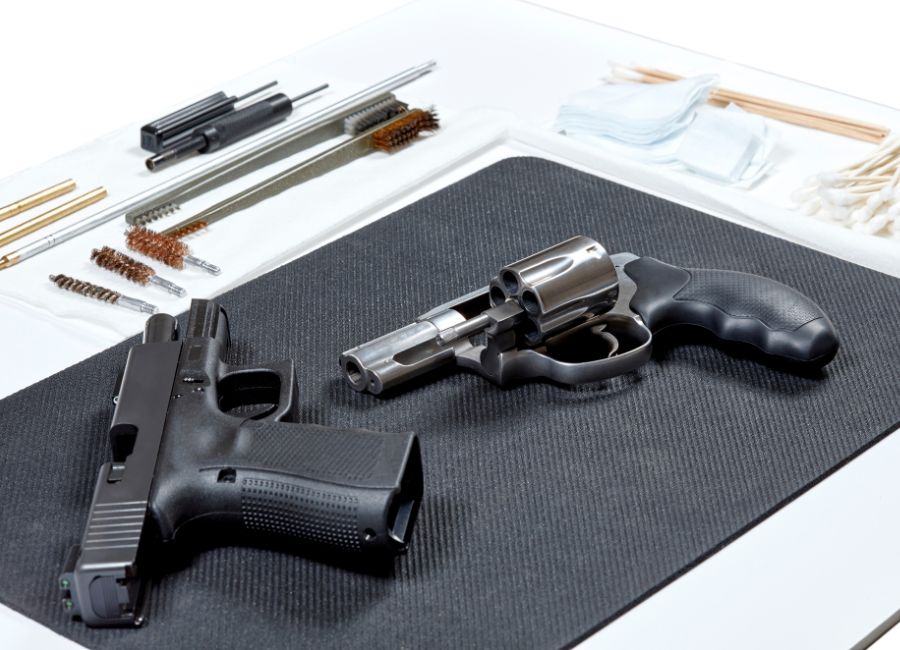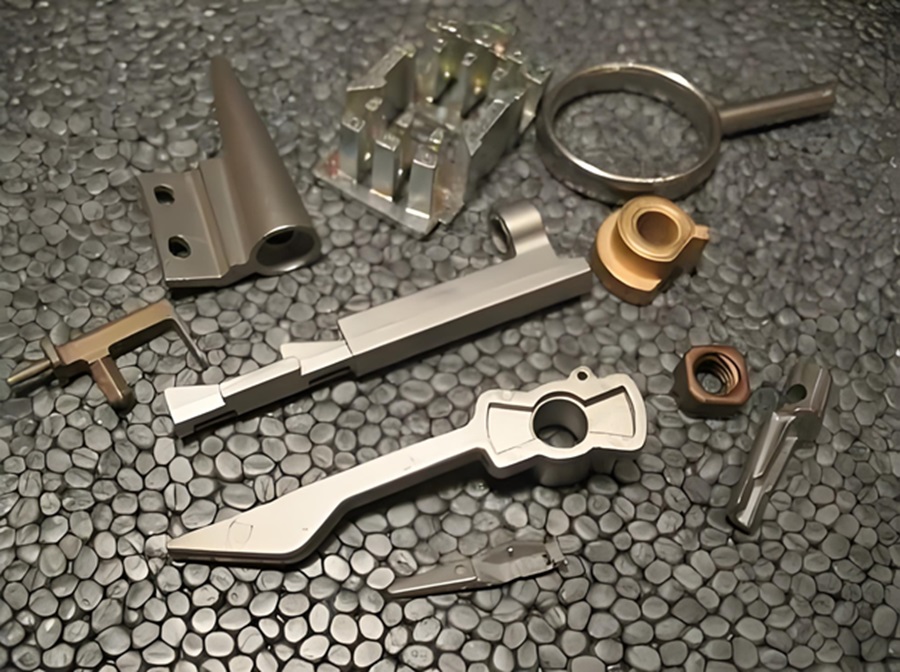Comprehensive Guide to Metal Injection Molding for Gun Parts Solutions

Introduction
Metal Injection Molding (MIM) has revolutionized the manufacturing landscape for many industries, including firearms. The ability to produce complex and precise components with minimal material waste makes MIM an ideal choice for gun parts manufacturing. In this comprehensive guide, we will explore the key benefits of MIM in gun parts production, critical considerations for its implementation, and future trends that could shape the industry.
Key Benefits of Metal Injection Molding in Gun Parts Manufacturing
Enhanced Precision and Consistency
Dimensional Accuracy
One of the foremost advantages of Metal Injection Molding is its ability to produce parts with exceptional dimensional accuracy. Traditional manufacturing methods like machining and casting often struggle to maintain tight tolerances, especially for intricate gun components. MIM, on the other hand, utilizes finely powdered metals and precision molds, resulting in parts with high tolerance levels, often within ±0.5%. This precision ensures that gun parts fit together perfectly, enhancing the overall performance and reliability of firearms.
Consistency Across Large Volumes
Consistency is crucial in firearms manufacturing, where even minor variations can affect performance and safety. MIM excels in producing large volumes of identical parts, thanks to its repeatable process. Once a mold is created, it can be used to manufacture thousands of parts with the same specifications. This consistency not only improves quality but also reduces the need for extensive inspections and rework, saving time and costs.
Material Versatility and Strength
Wide Range of Materials
MIM supports a broad spectrum of materials, allowing manufacturers to choose the best material for specific gun parts. Common materials include stainless steel, titanium alloys, and high-strength steels, each offering distinct advantages. For example, stainless steel provides excellent corrosion resistance, essential for parts exposed to harsh environments, while titanium alloys offer an unmatched strength-to-weight ratio, ideal for lightweight firearms.
Superior Mechanical Properties
The mechanical properties of MIM-produced parts often surpass those of components made through traditional methods. The fine metal powders used in MIM lead to uniform microstructures, resulting in parts with superior strength, hardness, and wear resistance. These properties are particularly valuable for gun parts, which must endure significant stress and wear during use. MIM ensures that these parts remain durable and reliable throughout their lifecycle.
Cost Efficiency and Waste Reduction
Reduced Material Waste
MIM’s near-net-shape manufacturing process significantly reduces material waste. Traditional methods like machining often involve cutting away large portions of material, leading to high scrap rates. In contrast, MIM uses only the necessary amount of material to form the desired shape, minimizing waste. This not only lowers material costs but also aligns with sustainable manufacturing practices by reducing the environmental footprint.
Lower Production Costs
While the initial setup costs for MIM, including mold creation, can be high, the long-term production costs are considerably lower. The efficiency of the MIM process, combined with reduced waste and minimal need for secondary operations, results in lower overall costs. For manufacturers producing high volumes of gun parts, MIM offers significant cost savings, making it a financially attractive option.
| Project | CNC parts | MIM parts |
| Cost (per unit) | $8.25 | $2.5 |
| Machining center, labor, and related costs | $825,000 | $100,000 |
| MIM mold cost | An average of $20,000 | |
| Total cost (100,000 units produced in the first year) | $825,000 ($8.25 per part) | 250,000 ($2.50 per part) |
Because a single product is a molded product, it reduces the processing process and cost of CNC, and with the increase of the production quantity, the mold cost of a single product is also gradually decreased, usually the service life of MIM mold reaches 300,000 times.
Now, due to cost pressures and high requirements for product quality, many Oems are asking their parts suppliers to outsource their metal injection molding (MIM) parts production instead of operating machining centers in-house.
Meet the following requirements, more suitable for the use of the MIM process to replace the traditional CNC or casting process.
| Condition | Requirements |
| Annual output | More than 10,000 |
| Finished weight | Less than 100g / 3.5oz |
| Component size | Less than or equal to 3 inches |
| Maximum wall thickness | Less than or equal to 3 mm /0.125 inch |
| Material type | Ferrous metals only (no aluminum, copper, brass, zinc, or magnesium) |
| Complexity | Medium to high complexity |
| Union of parts | You can combine components into a single part |
| Advantage | It can reduce the weight of parts and increase the strength of parts |
Critical Considerations for Implementing MIM in Gun Parts Production
Design and Engineering Insights
Design Flexibility
MIM provides unparalleled design flexibility, allowing for the creation of complex geometries that would be challenging or impossible with traditional methods. This capability opens up new possibilities for innovative gun part designs that can enhance performance and functionality. Engineers can design parts with intricate features, undercuts, and internal structures, all achievable through MIM.

Engineering Challenges
Despite its advantages, MIM presents unique engineering challenges. Designing for MIM requires a deep understanding of material behaviors and molding processes. Engineers must consider factors such as shrinkage, mold design, and the flow of metal powders. Close collaboration between designers and MIM engineers is essential to overcome these challenges and fully leverage the benefits of MIM.
Quality Control and Certification
Quality Assurance Processes
Maintaining high-quality standards is critical in gun parts manufacturing. MIM parts undergo rigorous quality assurance processes, including inspection and testing, to ensure they meet strict specifications. Advanced technologies like X-ray imaging, ultrasonic testing, and coordinate measuring machines (CMM) are used to detect defects and verify dimensional accuracy. These quality control measures ensure that every part meets the required performance and safety standards.
Certification Standards
Compliance with industry certifications is crucial for gun parts manufacturers. Certifications such as ISO 9001, AS9100 (for aerospace-grade components), and various military standards ensure that the manufacturing processes meet international quality and safety requirements. Achieving and maintaining these certifications demonstrates a commitment to quality and can provide a competitive advantage in the market.
Supply Chain and Logistics Management
Efficient Supply Chain Strategies
An efficient supply chain is vital for the success of MIM in gun parts production. Manufacturers must establish reliable sources for high-quality metal powders and maintain strong relationships with suppliers. Effective supply chain management ensures the timely availability of materials, reducing production delays and optimizing inventory levels.
Logistics and Distribution
Logistics play a crucial role in delivering MIM gun parts to customers. Manufacturers must develop robust logistics strategies to ensure timely delivery and minimize lead times. This involves coordinating with logistics partners, optimizing shipping routes, and employing advanced tracking systems. Efficient logistics not only enhance customer satisfaction but also improve overall operational efficiency.
Future Trends and Innovations in MIM for Gun Parts
Technological Advancements
Emerging MIM Technologies
The future of MIM for gun parts looks promising with continuous technological advancements. Emerging technologies such as 3D printing for mold creation, advanced sintering techniques, and improved metal powders are enhancing the capabilities of MIM. These innovations are expected to further improve the precision, material properties, and cost-effectiveness of MIM-produced gun parts.
Automation and Smart Manufacturing
Automation is transforming the manufacturing landscape, and MIM is no exception. Smart manufacturing technologies, including robotics and artificial intelligence, are being integrated into MIM production lines to increase efficiency and reduce human error. Automated systems can handle complex tasks, from material handling to quality inspections, streamlining the manufacturing process and improving productivity.
Market Trends and Demand
Increasing Demand for Customized Gun Parts
Customization is a growing trend in the firearms industry, with consumers seeking personalized and unique firearms. MIM’s design flexibility makes it well-suited for producing customized gun parts. Manufacturers can quickly adapt to changing market demands and offer tailored solutions to meet individual customer preferences.
Global Market Dynamics
The global market for MIM gun parts is expanding, driven by increasing demand from various regions. Key markets such as the United States, Europe, and Asia present significant opportunities for growth. However, manufacturers must navigate challenges such as regulatory requirements, trade policies, and competition to capitalize on these opportunities.
Conclusion
Metal Injection Molding offers a compelling solution for the manufacturing of gun parts, combining precision, material versatility, and cost efficiency. By understanding the key benefits, critical considerations, and future trends, manufacturers can make informed decisions about implementing MIM in their production processes. As the technology continues to evolve, MIM is poised to play an increasingly important role in the firearms industry, driving innovation and enhancing the quality of gun parts. For industry stakeholders, embracing MIM solutions can lead to improved performance, reduced costs, and a competitive edge in the market.


